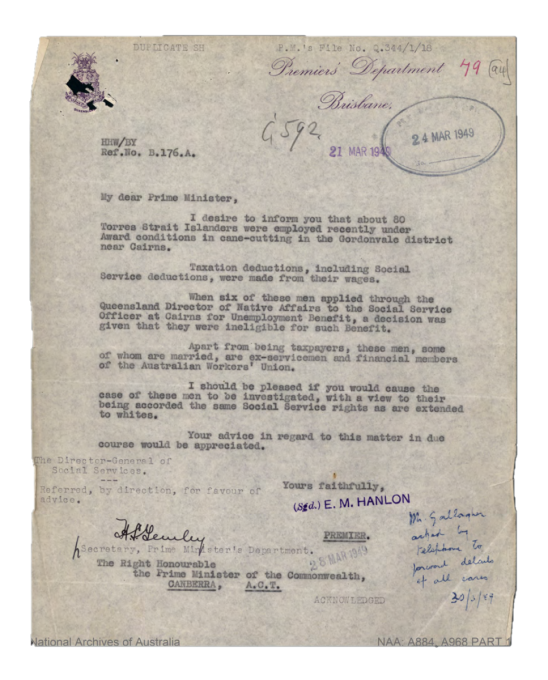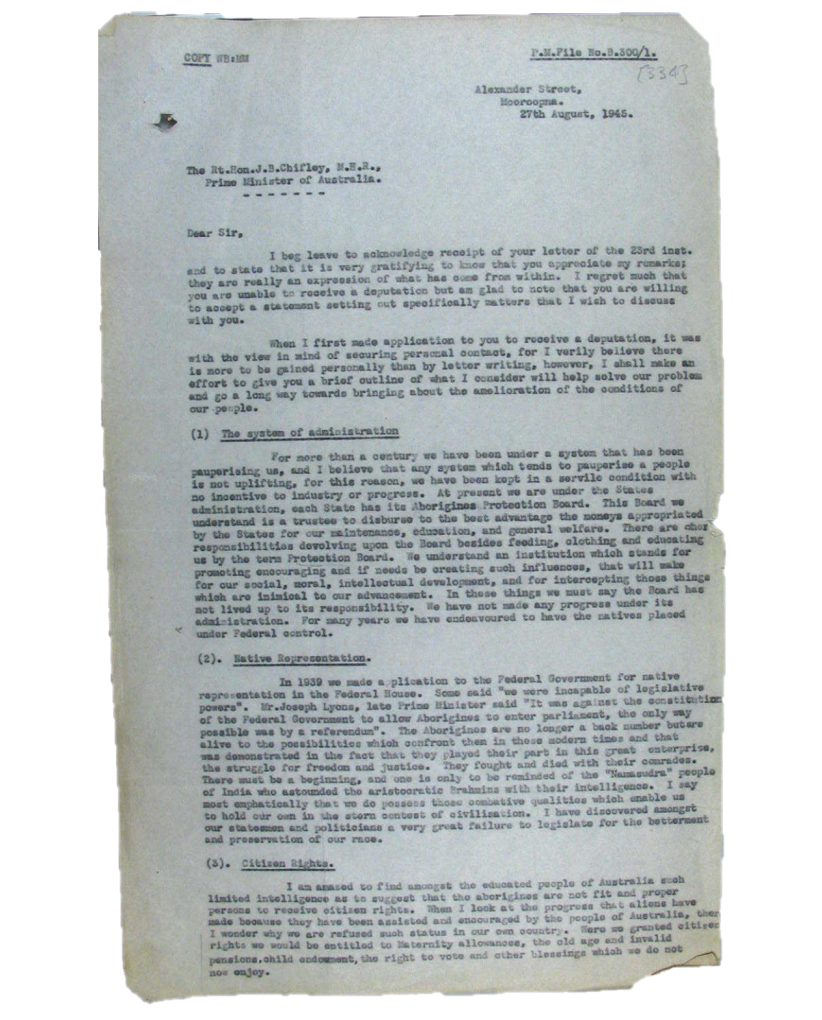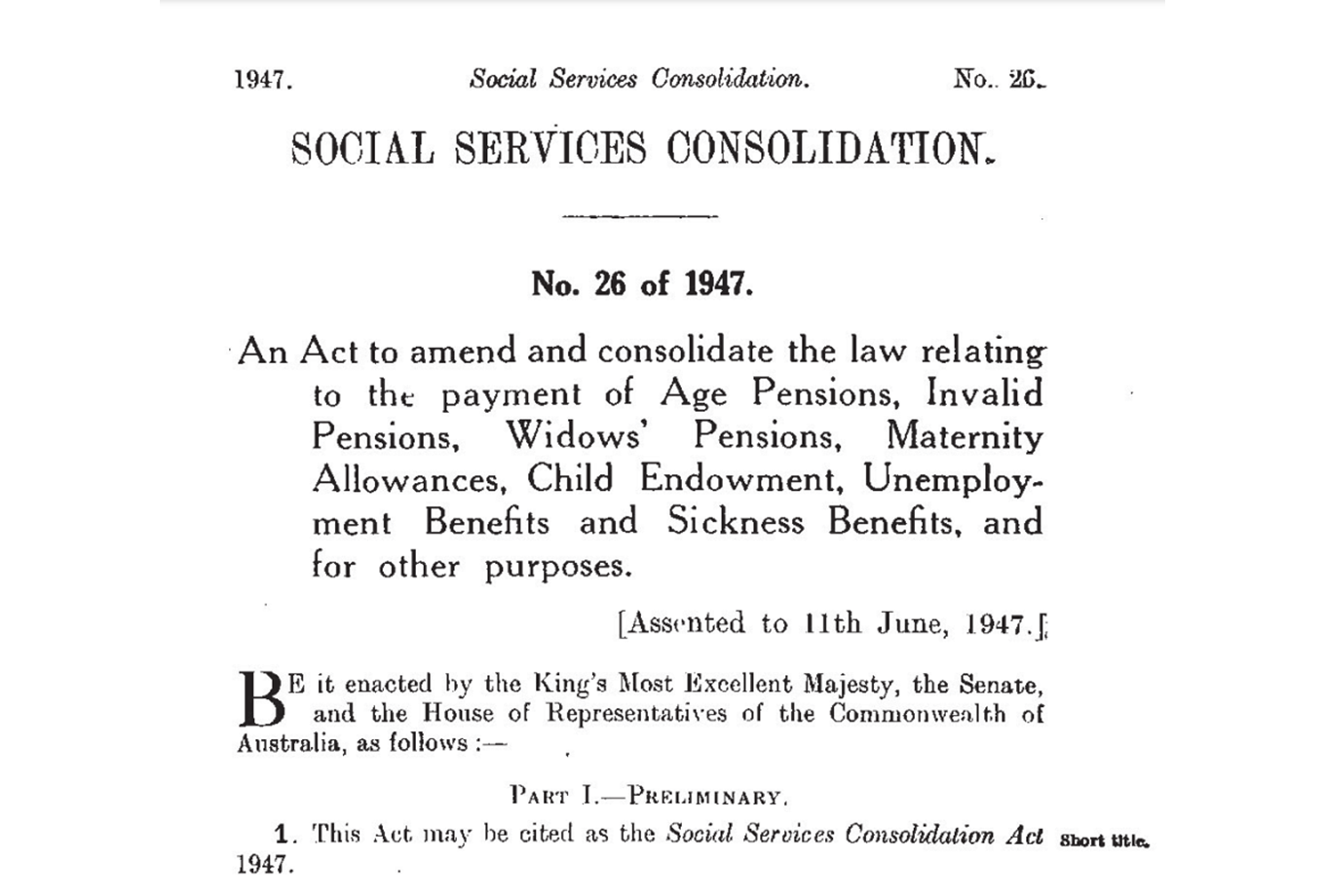1940s and earlier
When government payments became a federal responsibility in the 1940s, most Aboriginal and Torres Strait Islander people were excluded from payments. These artefacts show Aboriginal activists challenging the racial discrimination that was set out in law.
1938
First Aboriginal-led publication calls for equal rights
The Aborigines Progressive Association fought for full citizenship rights for Aboriginal peoples, including social security benefits. They organised, protested and addressed political leaders. They spread their message through the first Aboriginal-led publication, The Australian Abo Call.
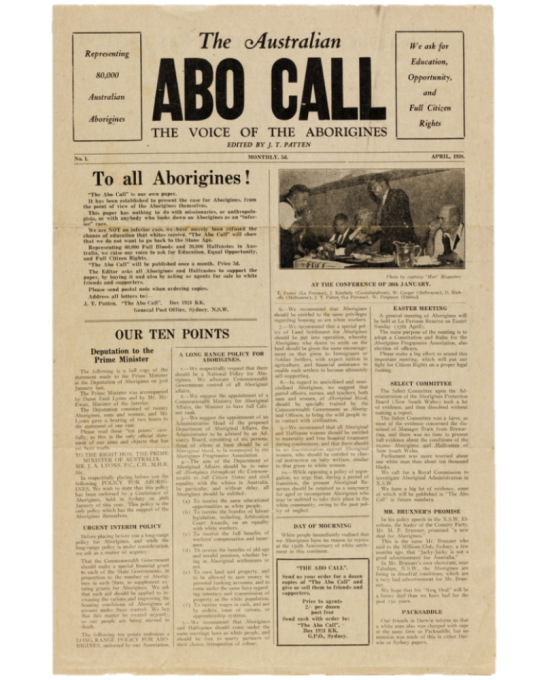
1942
Leader fights for fair access to benefits
Aboriginal activist and leader, Pearl Gibbs, fought for fair access to pensions and income support payments. She questioned proposed changes to social services legislation.
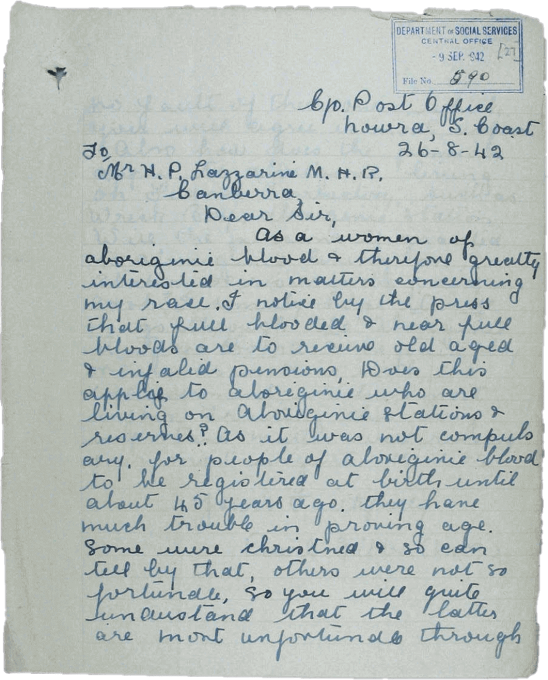
1945
Activist links citizenship and social service benefits
Aboriginal activist Shadrach Livingstone James petitioned the prime minister for federal citizenship rights for Aboriginal people. This included access to social security benefits and services.
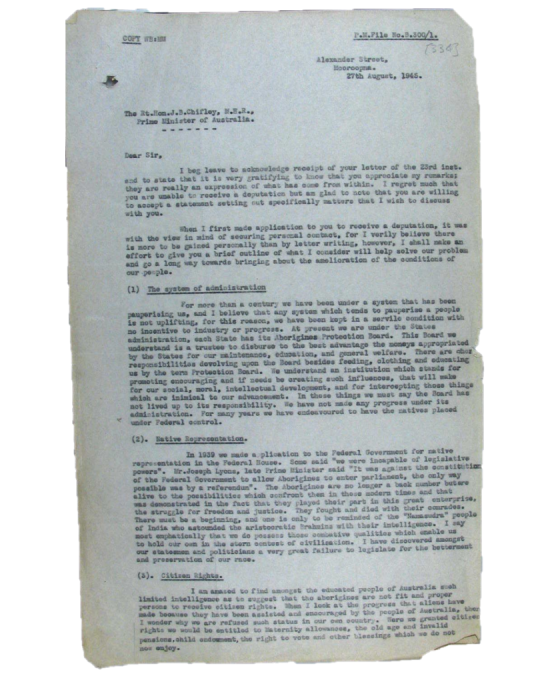
1947
Social Services Act excludes Aboriginal people
A new Act brought a range of social services together under federal government responsibility. It excluded Aboriginal and Torres Strait Islander peoples from payments unless they had an exemption.
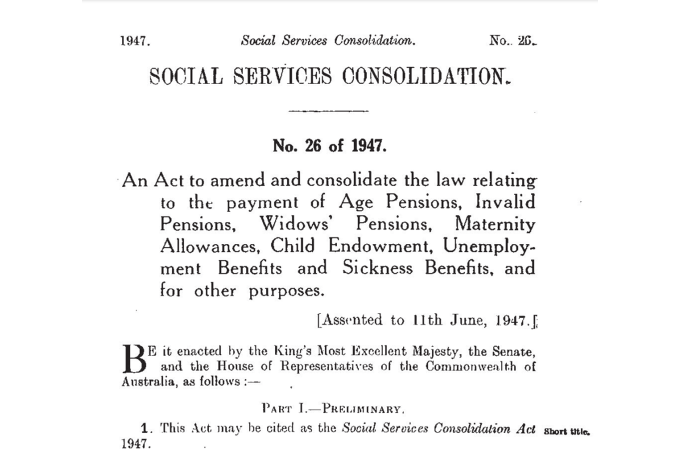
1947
Mission residents question exemption rules
Community leaders from South Australian missions questioned legislation that said they had to move away from missions to get government payments.
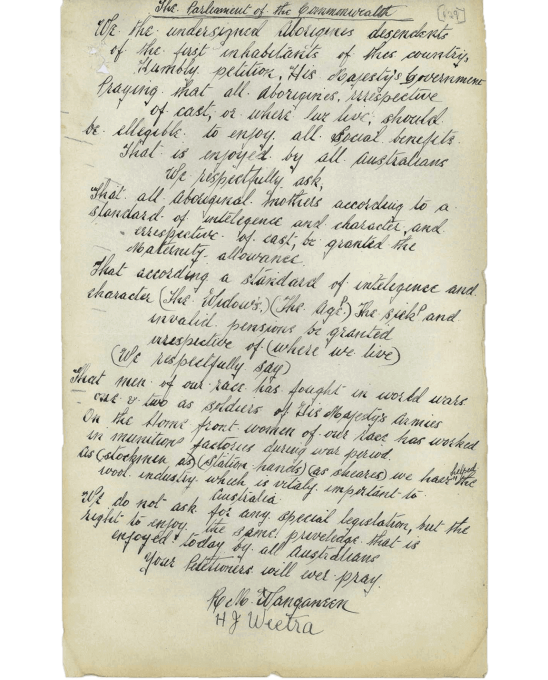
1949
Aboriginal rail labourers fight for equal payments
In 1949, Aboriginal railway labourers who had been denied Unemployment Benefit successfully lobbied the government for financial support.
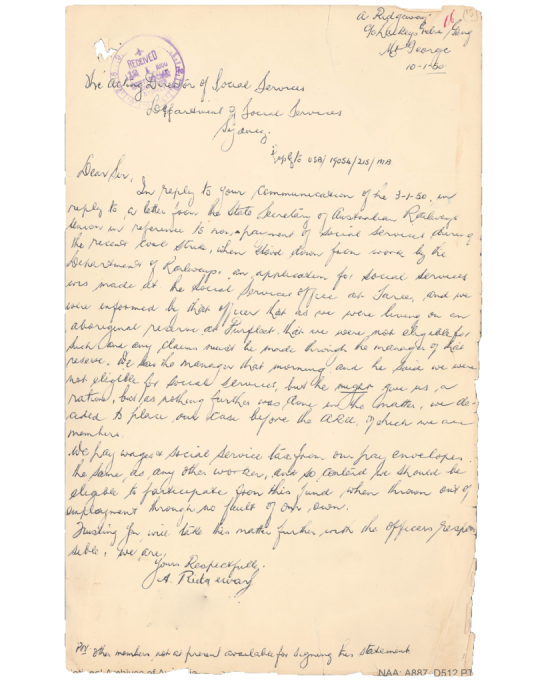
1949
Torres Strait Islander cane cutters test benefit rules
In 1949, the government rejected requests by 6 Torres Strait Islander cane cutters for Unemployment Benefit. The Queensland Premier asked the prime minister to review the decision.
